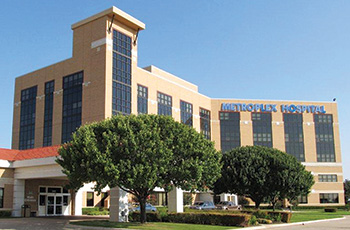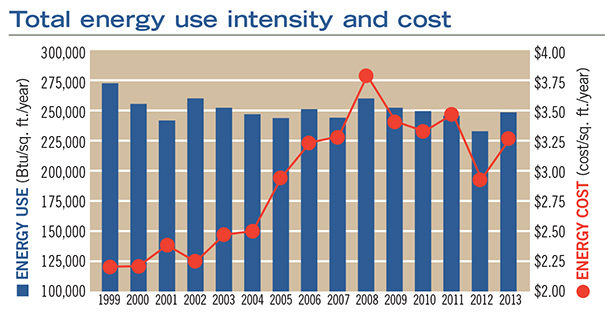 |
|
PHOTO COURTESY OF METROPLEX ADVENTIST HOSPITAL Metroplex Adventist Hospital cut energy use by implementing energy conservation measures on existing equipment. |
When Metroplex Adventist Hospital, Killeen, Texas, experienced a substantial drop in its energy use, the local utility company, Oncor Electric Delivery, decided it was time to investigate.
Thinking the reduction was due to a malfunctioning electric meter, the utility sent an engineer to the hospital to check it out. But the engineer determined that Metroplex was benefiting from a series of conservation measures that it instituted after partnering with Ridgecrest Energy Advisors, Houston.
At Ridgecrest’s advice and working with the company’s engineering team led by Jeff Hunt, the hospital optimized programming of air-handling units, zoned variable-air volume boxes, chillers, cooling towers, boilers and more. Control programs were automated so that the facility staff did not need to continuously monitor them or make adjustments.
As a result, Metroplex was the winning hospital in the Environmental Protection Agency’s 2013 National Building Competition for energy reduction. The facility currently is in the top 10 percent of hospitals in the nation for energy efficiency, according to Ridgecrest.
Metroplex has reduced overall energy use by 23 percent each year and saves an estimated $180,000 annually in energy costs since implementing Ridgecrest's energy conservation measures. The hospital also has reduced carbon emissions by more than 1,750 tons per year.
Identifying where and how to implement energy conservation measures instead of making costly capital equipment investments has enabled Ridgecrest’s hospital clients to win the hospital category of EPA’s Battle of the Buildings three out of the competition’s four years.
One major energy-saving opportunity involves understanding how the building automation system functions and what capabilities it has that are not utilized, says Ben Whitsett, senior vice president, Ridgecrest. Determining how to reduce energy-intensive reheating is another way to avoid what Whitsett calls “driving the building with your foot on the brake and the gas at the same time.” Utilizing an advanced sequence of system operation and control strategies can have a major impact, Hunt adds.




